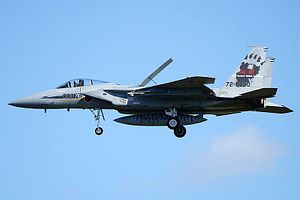It seems tensions in the East China Sea are on a true collision course. Unfortunately, such a play on words could involve possible casualties in the skies, setting off a regional crisis that could draw in the United States.
The latest incident occurred Wednesday morning when China accused Japanese F-15s of following a TU-154 aircraft in the area of the East China Sea. Beijing claimed the plane came as close as a 100 or so feet. In an interesting move, videos were promptly released by China showing the incident in detail.
To make matters worse, this was not the only incident on Wednesday where Chinese and Japanese planes approached each other. In a statement on its website, China’s Ministry of Defense claimed that “on the same day in the morning, the reconnaissance aircraft YS-11EB and OP-3 of the Japan’s self-defense forces conducts reconnaissance in the East China Sea Air Defense Identification Zone [sic].” The statement goes on to add “in accordance with the related regulations, China dispatched two J-11 fighters to identify and verify the Japanese aircraft with a distance more than 150 meters. The Chinese pilots’ operations are professional and standard with restraint. What Japanese pilots have done is dangerous and provocative.”
So what happens if Chinese and Japanese planes crash into each other over the contested skies of the East China Sea? While no one knows for sure, one could look to the 2001 China-U.S. Hainan Island incident to gain some insight.
On April 1, 2001, an American EP-3 aircraft collided with a PLAAF J-8 fighter. The pilot of the J-8 was killed while the U.S. aircraft was forced to undertake an emergency landing. The American EP-3 made an emergency landing on Hainan, leaving Chinese officials angered that the U.S. aircraft was gathering intelligence so close to China’s airspace.
The actual details of the incident, as told by U.S. Lt. Shane Osborne, are quite astonishing. In an interview with PBS Frontline he notes that the Chinese pilot “came up on us twice, and both times were really close. The second time, I could see him right out of our cockpit — he was like ten feet away. Looking right in his face, I was like, ‘This isn’t good.’” He adds that the Chinese pilot did not back off and that he “dropped away once, came back. The second time I was like, ‘OK, he’s going home for sure.’ Then when I heard him come the third time, I had an eerie feeling. I just knew he was going to hit us, because he wasn’t stable. He was all over. The third time, you heard screams coming from the back as he came and he pitched up into us.” Osborne remarked “I was pretty certain we were dead at that point.”
Thankfully the aircraft was able to land — but only on Chinese controlled Hainan Island. The American servicemen were interrogated. Osborne explained how he was interrogated to Frontline: “They would try different ways — different threats of being tried, and accusing me of being a master spy, etc., and they used sleep deprivation techniques. After I didn’t cooperate, they took me away from the crew and isolated me for the next eight days”
The Americans were released weeks later when U.S. officials offered an “odd” apology or what is known as “the letter of the two sorries.” The actual translation and meaning of the letter is still disputed to this day.
After the incident, the Bush Administration seemed to take a harder line on China. Frank Ching, a Hong Kong based journalist, explained on The Diplomat in 2011 that “Ten days after the crew was returned, Bush decided on a major arms deal for Taiwan, offering several billion dollars’ worth of equipment — the biggest arms package since his father decided in 1992 to sell F-16s to Taiwan. The new package included diesel-powered submarines, which the United States had never previously offered to Taiwan.”
Tension would remain high through the summer of 2001 until America’s attention would shift to the Middle East after the terrorist attacks on September 11.
Would Japan or China react in a similar manner if their planes collided? There is good reason to think reactions to such an incident would not be as measured as the 2001 incident. For starters, the fires of nationalism are burning strong in both countries. Such an incident would only inflame tensions even more. Does anyone believe either country would admit any guilt or be willing to apologize? Such an incident could start both nations down a dangerous path toward an even larger crisis — a crisis that is in no one’s interest.
Indeed, Japan and China must come to some consensus on the rules of the sky when both its planes are in disputed territory and in close proximity. While neither side wants to give any ground, there is the possibility that both sides could implement some sort of communications system or rules of engagement so such incidents don’t turn deadly. Here Washington could play a constructive role in bringing the parties together and helping to facilitate dialogue. Such dialogue is sorely needed.
Unless something is done, incidents in the contested skies will continue accumulating. And it seems like just a matter of time before they become deadly.

































